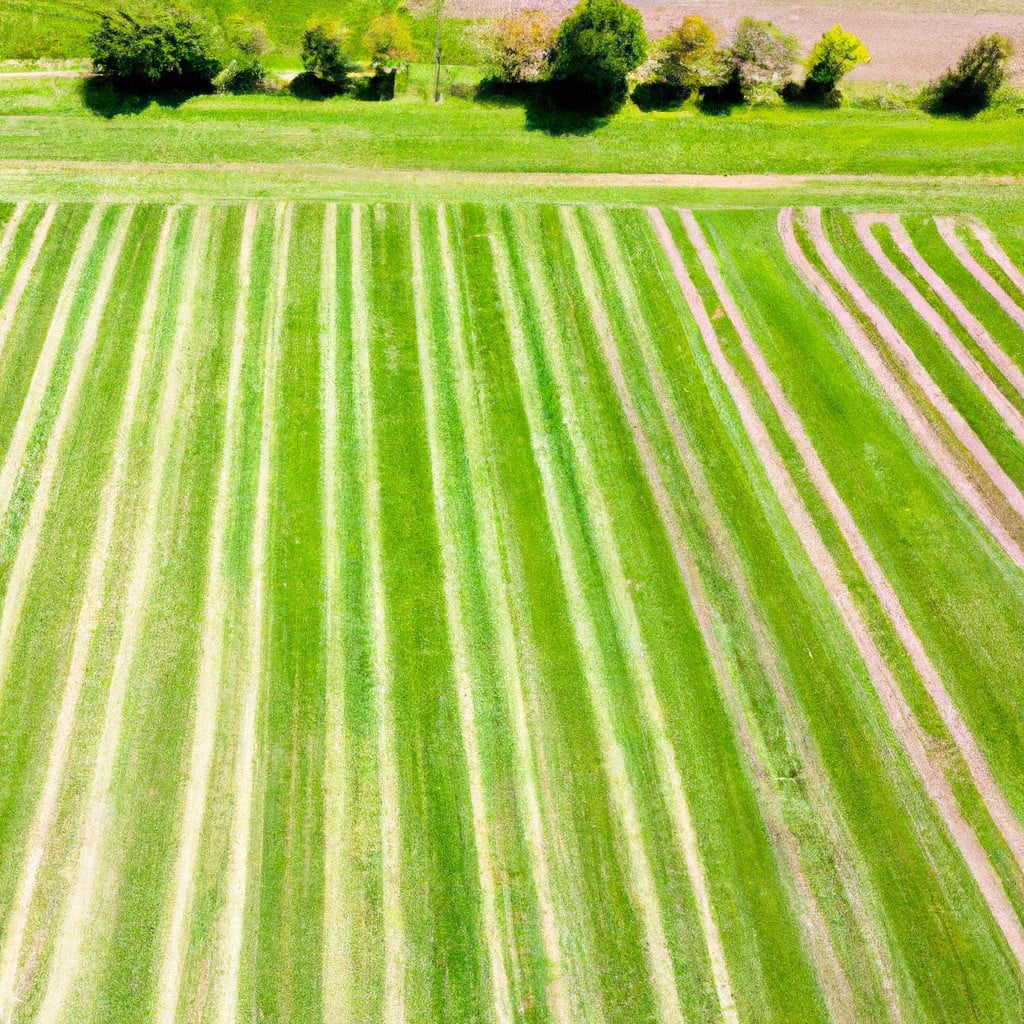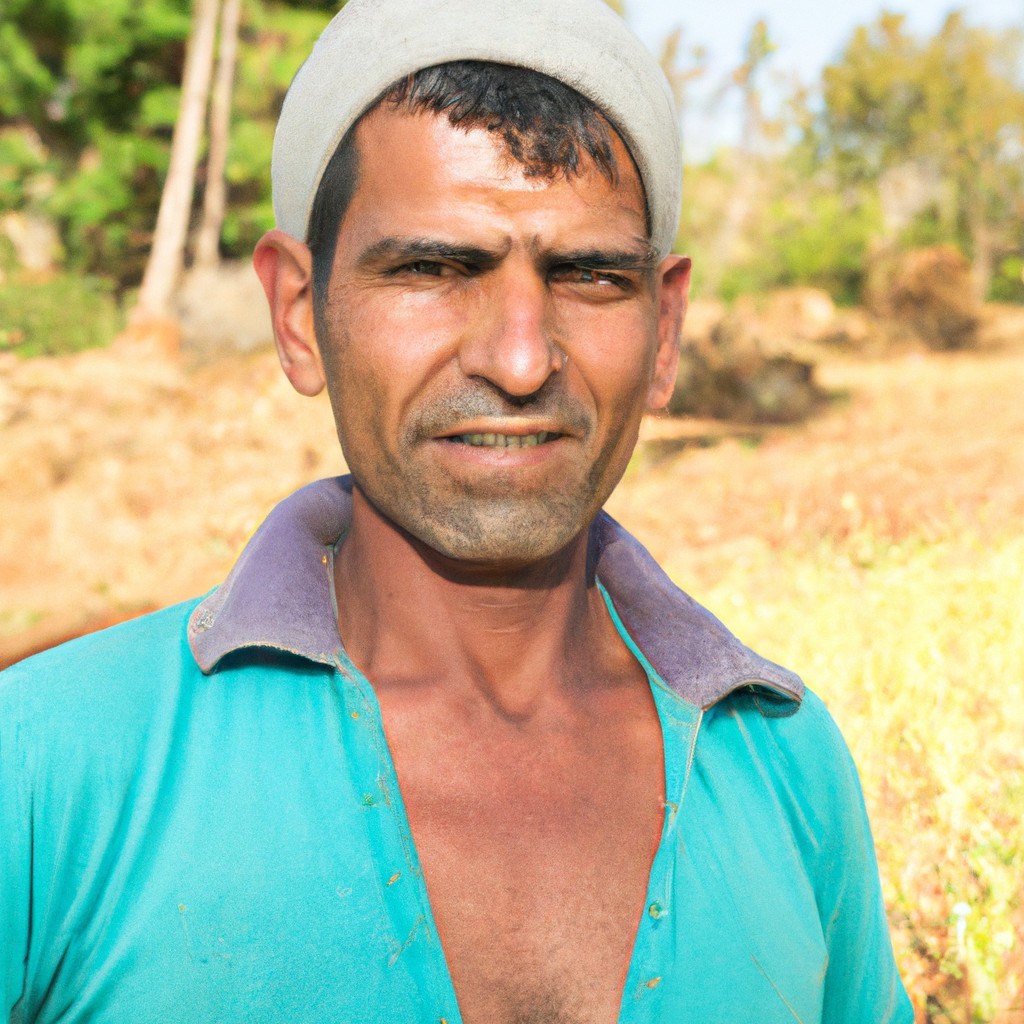Regenerative farming practices offer a sustainable approach to agriculture by focusing on restoring soil health, promoting biodiversity, and enhancing ecosystem resilience.
Regenerative farming practices are innovative techniques that aim to rejuvenate the health of our ecosystems while bolstering agricultural productivity. These practices, which include cover cropping, crop rotation, reduced tillage, and integration of livestock, focus on enhancing soil health, increasing biodiversity, improving water cycles, and capturing carbon in the soil.
In essence, regenerative farming is all about farming in harmony with nature, by creating a self-sustaining system where resources are replenished rather than depleted. This article will delve into the specifics of these practices, their benefits, and their impact on our environment and food systems.
Key takeaways:
- Regenerative farming focuses on soil health, biodiversity, and ecosystem resilience.
- Key principles include nourishing soil health, promoting phytochemical diversity, and integrating livestock.
- Practices include minimizing soil disturbance, maintaining year-round cover crops, and nurturing relationships within ecosystems.
- Regenerative farming reduces reliance on synthetic inputs, diversifies crops, and optimizes the use of biological and chemical inputs.
- It improves soil health, mitigates climate change impacts, and preserves natural ecosystems while increasing food production.
Look Inside:
Regenerative Agriculture Principles

Regenerative agriculture operates under several fundamental principles geared towards enhancing ecosystem health and resilience. One of the cornerstones is the nourishment of soil health through organic matter enrichment and biodiversity fostering.
Phytochemical diversity, which emphasizes on diverse cropping systems and cover crops, is another guiding principle. Soil disturbance should be minimal to necessary operations only, safeguarding the natural soil microbiome.
Another key tenet is the integration of livestock in farming systems, following natural grazing patterns to promote nutrient cycling and soil aeration. The approach aims to maximize self-sufficiency, cutting down on synthetic inputs, and instead, leveraging natural processes for pest management and fertility.
These principles form the basis for not just environmentally sustainable farming, but economically profitable and socially empowering agriculture too.
Regenerative Agriculture Is a Philosophy
At its core, this approach emphasizes working with nature, rather than against it, allowing farms to thrive naturally. It recognizes the farm as a complex ecosystem where every living organism, from the largest livestock to the smallest microbe, plays a crucial role in maintaining overall health and productivity.
The aim is to create systems that are self-sustaining, resilient, and benefitting all living entities within them. It encourages farming practices that not only sustain, but thrive. Special attention is paid to the restorative processes that create healthier soil, cleaner water, and a more robust ecosystem overall.
This methodically thoughtful approach is driven by a comprehensive understanding of ecological principles, backed by scientific research, and applied in practical ways for modern farming.
Prioritize Soil Health
Healthy soil serves as the foundation of regenerative agriculture, acting as a living ecosystem that sustains plants, animals, and humans.
A focus on soil health implies boosting its organic matter and improving its structure to enhance nutrient availability, water retention, and resilience against pests and diseases.
A range of techniques, such as composting, cover cropping, and minimized plowing, are employed to foster biological activity and diversity in the soil.
These practices not only bolster crop productivity but also improve the soil’s ability to capture and store carbon, playing a crucial role in mitigating climate change.
Minimize Soil Disturbance
One core strategy revolves around limiting disruptions to the soil, like excessive plowing or tillage. This method aids in the preservation of microorganisms and earthworms – crucial friends to fertile grounds.
Restricting such disturbances not only aids in maintaining soil structure but also reduces erosion and loss of organic matter. Techniques like no-till farming or direct seeding into crop residues can help achieve this, contributing to a vibrant soil ecosystem and setting the stage for more resilient crops.
Maintain Plants in the Ground Year Round
By cultivating cover crops during the off-season, farmers can preserve and enhance soil health. These plants serve to shield the soil from erosion, suppress weed growth, and enhance soil structure.
They also nurture beneficial organisms, contributing to a thriving underground ecosystem. Additionally, cover crops can sequester carbon, positively impacting the fight against climate change. They essentially act as a living soil cover, minimizing any periods where the soil is left bare and vulnerable to degradation.
By doing so, they help to maintain a continuous cycle of growth and decay—key to fortifying soil health. Therefore, instead of leaving fields fallow, keeping plants in the ground throughout the year reaps numerous environmental and agricultural benefits.
Nurture Relationships Within and Across Ecosystems
Promoting symbiotic relationships in the ecosystem is integral for sustainable farming. For instance, beneficial insects act as natural pest control, reducing the need for chemical insecticides. Pollinators enhance the productivity of certain crops significantly.
Practices like planting native species or creating habitats for these supportive organisms can entice them to the farm. Equally important is fostering relationships across ecosystems. Waterways can, for example, serve as vital corridors for biodiversity.
Farmers can nurture these relationships by preserving natural water features and avoiding practices that harm aquatic ecosystems, such as excessive nutrient runoff. Through these efforts, a regenerative farm can be a thriving, interconnected web of life.
Reduce Reliance On Synthetic Inputs
Transitioning to natural alternatives in place of synthetic fertilizers and pesticides is a vital part of regenerative farming. Overuse of these synthetic inputs can degrade soil health by killing beneficial microbes and causing nutrient imbalances.
In contrast, using organic fertilizers, such as compost and green manure, can enrich the soil, stimulating natural processes that enhance its ability to preserve nutrients and water. Similarly, encouraging natural predators, planting pest-resistant crop varieties, and rotating crops can help keep pests and diseases under control, reducing the need for synthetic pesticides.
This shift not only rejuvenates soil health but also reduces agricultural runoff, thereby protecting water sources from contamination. It’s about creating a self-sustaining system where reliance on external resources is minimized.
Increasing Plant Diversity
Adopting a variety of species can yield numerous benefits. Different plant species not only draw and store different nutrients but also interact with various soil organisms, which aids in further balancing the soil ecosystem.
Some plants, through their root system, can access deeper soil layers, bringing up nutrients that other plants cannot reach. Furthermore, a diverse crop system helps to break pest and disease cycles.
To implement this, farmers can intercrop – plant different crops in proximity – or practice sequential cropping – planting different crops in the same place but in different seasons. These strategies not only contribute to healthy and fertile soil but also reduce the risk of crop failure, providing a safer economic outlook for farmers.
Diversify Crops in Time and Space
Efficient use of land and resources is possible by introducing different plants at varying intervals throughout the year. This practice, known as crop rotation, not only improves field conditions by controlling pests and diseases, but it also replenishes the soil with a range of essential nutrients.
Additionally, intercropping – the practice of growing two or more crops together in close proximity – can promote complementarity and mutualism between different plant species, making such systems more resilient to adverse climatic events.
Through the diversification of crops, farmers can create a robust agricultural system capable of withstanding environmental changes while enhancing productivity and reducing dependence on synthetic inputs.
Optimize Application of Biological and Chemical Inputs
By using compost, manure, or other organic matter, the availability of nutrients for plants can be improved, promoting healthy plant growth and reducing the need for synthetic fertilizers.
Biological inputs, such as beneficial microorganisms, aid in nutrient cycling and disease suppression.
Proper application of these inputs not only revitalizes the soil but also reduces the impact on the environment due to decreased chemical runoff.
The use of precision agriculture technologies can also play a critical role in optimizing these inputs, ensuring they are used efficiently and judiciously to reduce waste and environmental harm.
Integrate Livestock When Possible
Moving beyond mono-cropping, integrating livestock into farming systems can play a crucial role in regenerative practices. This process involves the intentional combination of animals and crops on the same parcel of land, pursuing a profitable and eco-friendly balance.
When done properly, livestock can assist in nutrient cycling as their manure acts as a natural fertilizer, adding organic material back into the soil and improving its fertility and structure. Moreover, the animals also help control pests and diseases, reducing the demand for synthetic pesticides. This symbiosis benefits not only the soil ecosystem but also the farmer’s productivity and the health of the communities dependent on these agricultural systems.
Regenerative Agriculture Techniques
Utilizing specific techniques can yield the sustainable outcomes sought by regenerative agriculture practices. One of the foremost methods is reduced or no-till farming, which lessens soil disruption and the erosion associated with traditional tillage practices. This encourages biodiversity, aids water retention, and enhances the soil’s organic carbon content.
Cover cropping, another beneficial method, entails planting specific plants intended not for harvest, but to manage soil erosion, fertility, quality, pests, diseases, biodiversity, and wildlife. By keeping the soil active year-round, cover crops provide habitat for beneficial insects and microorganisms while reducing weed pressure.
Furthermore, incorporating composting into farming operations improves soil structure, increases nutrient content, encourages microbial activity, and aids water retention. Proper composting minimizes waste and helps sequester carbon in the soil.
Lastly, the integration of livestock can amplify regenerative agriculture’s effectiveness. Managed grazing, where livestock are shifted across pastures, mimics natural, wild herd behaviors, leading to an even distribution of manure and urine, which fertilizes the land naturally, and reduces overgrazing. These techniques, employed in harmony, work to bolster the vitality and productivity of agricultural landscapes.
Reduced or No-till Farming Practices
Implementing these practices can significantly lessen soil erosion. Traditional tilling techniques often leave the soil bare and susceptible to wind and water erosion. However, with reduced or no-till methods, the soil’s surface remains covered, providing protection from the elements.
This practice also preserves vital soil structure and conserves water by reducing evaporation rates. Moreover, it aids in maintaining carbon within the soil, turning agricultural lands into potential carbon sinks and directly contributing to climate change mitigation.
Cover Cropping
Cover cropping is an indispensable part of regenerative farming, serving multiple purposes. These are crops that don’t end up on our dinner tables but play a critical role in maintaining the soil’s health and productivity.
They help improve the soil structure and maintain nutrients in the soil, preventing them from being washed away by rain. This practice promotes the growth of beneficial insects and controls weeds, eliminating the need for chemical herbicides.
The roots of cover crops also sequester carbon from the air, aiding in mitigating climate change. Moreover, when these crops decompose, they enrich the soil with organic matter, improving its fertility for future plantings.
Composting
Composting is a way of using organic waste to nourish the soil. It involves the strategic decomposition of organic matter, such as left-over food and yard debris, to create nutrient-rich compost. This natural fertilizer improves soil health by increasing its organic composition, enhancing its nutrient content, and improving its moisture retention capabilities.
In regenerative farming, composting aids in carbon sequestration and promotes biodiversity within soil microbiomes. It also reduces the need for synthetic fertilizers, thereby decreasing farms’ chemical input reliance. It’s an ecologically friendly and cost-effective approach to boost crop productivity while minimizing environmental impact.
Managed Grazing
While conventional farming often isolates livestock and crop production, regenerative agriculture chooses to integrate them. Managed grazing is an excellent example of this principle as it promotes frequent and systematic movement of herds across various pastures or ‘paddocks.’
This method mimics the natural behaviors of wild ruminants, reducing overgrazing, enhancing soil fertility, and promoting the growth of diverse vegetation. It aids in the sequestration of carbon in the soil, suppresses weed growth, and breaks pest cycles.
Altogether, managed grazing creates a rich, self-sustaining environment that benefits both livestock and the land.
Improve Soil Health to Mitigate Climate Change Impacts
Soil health is integral in mitigating climate change. Healthy soil has a greater capability to absorb and store carbon from the atmosphere, helping offset greenhouse gas emissions.
This process, known as carbon sequestration, is greatly enhanced in regenerative farming systems.
Moreover, by improving the organic matter content and water-retention capacity of the soil, we increase its resilience to weather extremes, reducing vulnerability to droughts and floods, both of which are intensifying under climate change.
Hence, healthier soils empower farmers, increase crop yield, and contribute tremendously to climate change mitigation.
Reduce Greenhouse Gas Emissions in Agriculture
Regenerative farming strategies help curb emissions by sequestering carbon in soil and vegetation. Cover cropping and application of compost, for instance, not only boost soil fertility but also enhance its capacity to absorb and store carbon, leading to lower CO2 in the atmosphere.
Similarly, well-managed grazing systems can turn livestock from a source of methane into instruments for carbon sequestration, by promoting grass growth and root development that locks CO2 underground. This carbon-locking potential of regenerative practices signifies their crucial role in mitigating the carbon footprint of agriculture.
Boost Climate Resilience
Regenerative farming plays a critical role in enhancing an agricultural system’s ability to withstand climatic shocks and stresses. Healthy soils, rich in organic matter and microbial life, have a greater capacity to absorb and retain water. This increased water-holding capacity not only aids in the mitigation of flood and drought conditions but also buffers crops against extreme weather variations.
Furthermore, diversified farming systems provide a spread-out risk— when one crop fails due to particular weather conditions, another may thrive. The enhanced system resilience ensures food security while maintaining the integrity of the ecosystem.
Protect and Restore Natural Ecosystems
By applying regenerative farming techniques, it is possible to return degraded environments back to vibrant, thriving ecosystems. Native vegetation and wildlife can be reintroduced to these areas, helping to foster biodiversity—a crucial element under threat in many traditional farming areas.
Restoring natural ecosystems also increases the land’s resilience to extreme weather events such as droughts and floods, as healthy soils and diverse plant life can better absorb and retain water. The benefits extend beyond the farm’s boundaries as well, with improved water quality and reduced sediment and nutrient runoff into nearby waterways.
Not only does this contribute to healthier aquatic environments, but it also benefits downstream communities. At the same time, ecosystems that are rich in biodiversity can regulate pests and diseases, reducing the need for external chemical inputs. Hence, fostering and maintaining a balanced natural ecosystem underpins the entire regenerative agriculture process.
Increase Food Production and Preserve Agricultural Land
Using regenerative practices can significantly enhance crop yields over time. Although the initial transition may pose challenges and require investment, the long-term gains are substantial. Higher organic matter and better soil structure, achieved through these practices, lead to increased soil fertility and plant nutrient availability. This, in turn, boosts crop productivity.
Moreover, these methods improve the resilience of agricultural systems against weather extremes, pests, and diseases, ensuring steadier and more reliable yields.
In terms of land preservation, regenerative agriculture helps retain topsoil by minimizing erosion. The enhanced soil structure helps retain water, reducing the impact of droughts. This practice ensures that approximately two billion hectares of degraded agricultural land worldwide could be rehabilitated and preserved for future farming. This not only secures our food production for the future but also contributes to rural livelihood sustainability and biodiversity conservation.
FAQ
What are the 3 keys to regenerative agriculture?
The three keys to regenerative agriculture are maintaining permanent cover, practicing crop rotations, and reducing tillage to enrich soil health.
How do regenerative farmers make money?
Regenerative farmers generate income through obtaining higher premiums for their crops via certifications, direct consumer sales of their grain as seed or feed, and multipurpose use of their fields beyond just corn cultivation.
Is regenerative farming the same as sustainable farming?
No, regenerative farming is not the same as sustainable farming; while sustainable farming aims to maintain current conditions, regenerative farming strives to improve and restore damaged agricultural ecosystems.
What techniques are utilized in regenerative farming to improve soil health?
Regenerative farming improve soil health through techniques such as cover cropping, rotational grazing, composting, and reducing tillage.
How does regenerative agriculture contribute to climate change mitigation?
Regenerative agriculture contributes to climate change mitigation by sequestering carbon in the soil, thus reducing atmospheric greenhouse gas concentrations.
What are the challenges faced by farmers shifting from traditional to regenerative farming methods?
Farmers shifting from traditional to regenerative farming methods face issues such as a lack of initial financial support, knowledge gaps in regenerative techniques, and challenges in transitioning farm systems while maintaining productivity.




